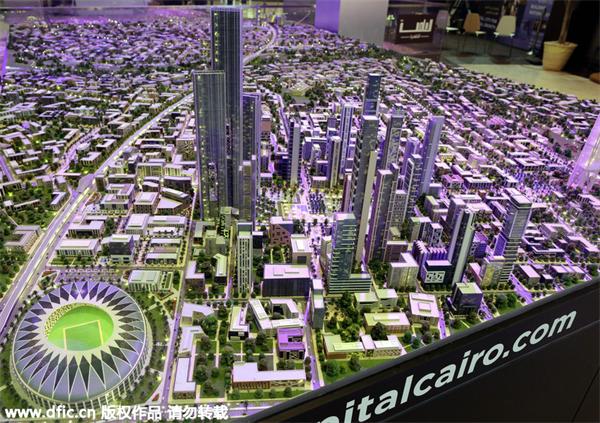Egypt's plan for new capital offers food for thought
By Fu Jing (China Daily) Updated: 2015-03-18 09:11
 |
|
A picture made avaliable 16 March 2015 shows a scale model of a planned new capital for Cairo during the second day of the Egypt Economic Development Conference (EEDC), in the Red Sea resort of Sharm El-Sheikh, Egypt, 15 March 2015. |
Egypt is determined to rise from devastation of the West-led "Arab Spring" by building a glitzy new capital between the existing one in Cairo and the Suez Canal. The move aimed at building a pollution-free and sustainable city has won the support of many oil-rich Arab countries such as Saudi Arabia, Kuwait and United Arab Emirates, which have pledged to provide the bulk of the $15 to 20 billion expenditure.
In these times of falling oil prices, this is a bold step to capture new development fronts, which could also check Cairo's population explosion and traffic congestion pressures.
Many Chinese may think Egypt's bold plan offers them the investment opportunity they desperately need to further the Silk Road Economic Belt and 21st Century Maritime Silk Road initiatives.
But more than that, Egypt's move has offered timely food for thought for China's top policymakers, especially with regard the integration of Beijing, Tianjin and Hebei province. China has accelerated the pace of building an integrated economic belt with Beijing at the center. But an overarching strategy is still to take final shape.
Unlike Egypt's ambitious plan to build a new eco-friendly capital, China's focus on integral development is aimed more at reducing smog, air and water pollution, and traffic jams. Comparatively speaking, Beijing's expansion plan is not ambitious, bold or innovative enough.
Cairo has a population of more than 18 million, almost the same as that of Beijing and nearly double that of the capitals of several advanced European countries, such as Belgium, Sweden, Switzerland, Greece and Denmark.

I’ve lived in China for quite a considerable time including my graduate school years, travelled and worked in a few cities and still choose my destination taking into consideration the density of smog or PM2.5 particulate matter in the region.











